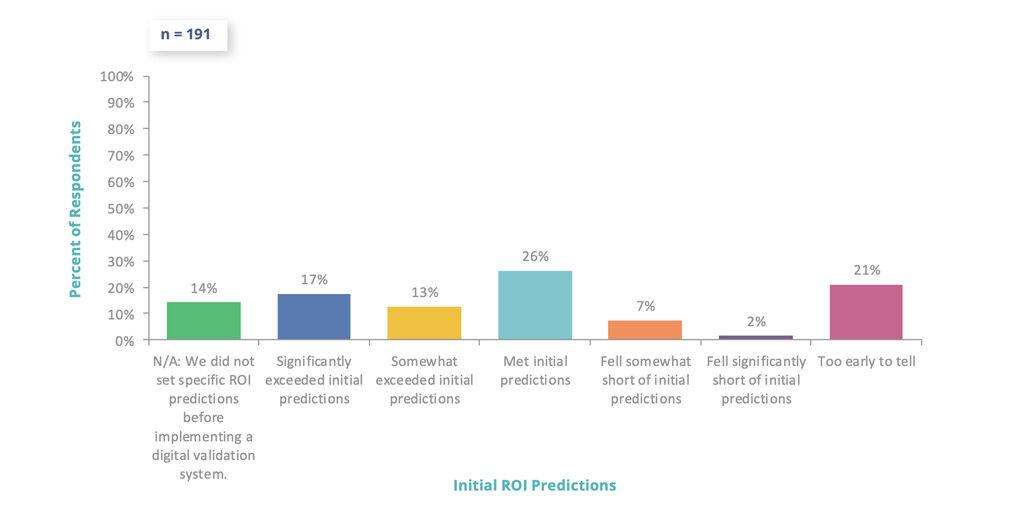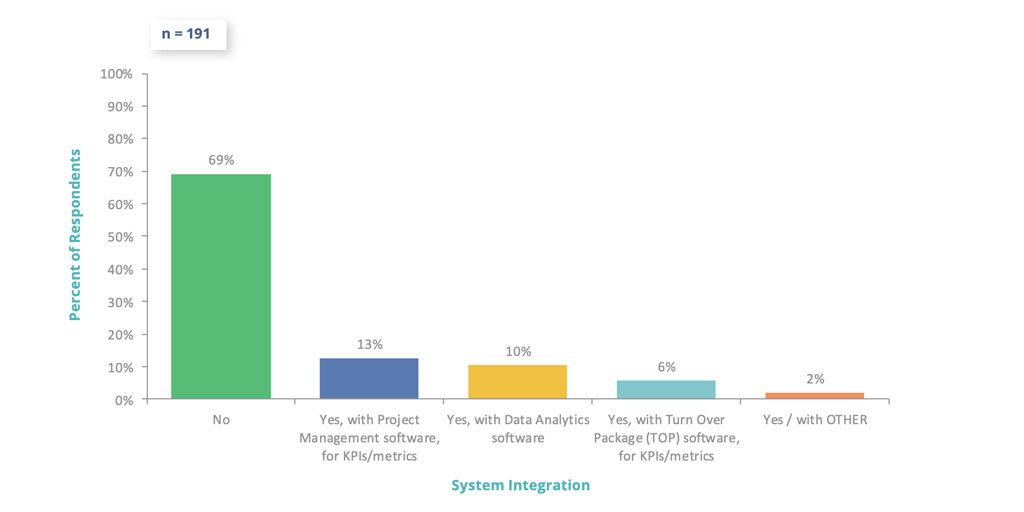The 2025 State of Validation report reveals a validation landscape transformed. With 58% of organizations now using digital validation systems — up from just 30% the previous year — it’s clear that the shift to digital is well underway. But while the tools are being adopted, implementation isn’t always straightforward. And in some key areas, organizations are still falling short of the full potential digital validation offers.
So, what’s working, what’s holding teams back, and what guidance does the ISPE’s Good Practice Guide: Digital Validation offer to help bridge the gap?
Let’s take a look.
Digital validation is delivering on ROI
The good news? For most organizations, digital validation is living up to its promise. According to the report, 98% of respondents say their system met, exceeded, or is on track to meet expectations — and only 2% report significant disappointment in ROI.
Stated ROI From Digital Validation

This aligns with guidance from the ISPE, which emphasizes that successful digital validation projects should start with a clear definition of expected value and ongoing ROI tracking across people, processes, and platforms.
But integration is lagging
One of the clearest missed opportunities in 2025 is integration.
Despite the rise in adoption, nearly 70% of organizations say their digital validation systems are not integrated with other tools — like project management, data analytics, or TOP (Turn Over Package) systems. Without integration, validation continues to operate in a silo, limiting visibility and creating unnecessary manual effort.
Integration of Digital Validation Tools with Other Systems

The ISPE Digital Validation Guide reinforces the importance of connectivity, recommending that digital validation systems be interoperable with broader enterprise systems to improve traceability, efficiency, and compliance visibility.
The hardest problems are human
While technology adoption is progressing, the most commonly reported implementation challenges aren’t technical — they’re cultural and organizational.
According to the report:
- 49% cited the inherent complexity of validation
- 45% struggled with resistance to change
- 38% had trouble ensuring adoption from users
These findings are echoed in the ISPE guide, which stresses that transformation must be accompanied by organizational readiness. This includes proactive change management, early stakeholder engagement, and training to build user confidence.
Teams are prioritizing foundational features
Interestingly, the features that matter most to validation professionals are not the flashiest. Survey respondents ranked safe and secure data storage, guided workflows, and intuitive user interfaces as the most important system functions.
More advanced capabilities — like API integrations and automated traceability matrix generation — were considered less critical, suggesting that many organizations are still focusing on mastering the core foundations of digital validation before progressing toward more sophisticated use cases.
This prioritization is consistent with ISPE’s guidance, which advises organizations to establish secure, robust systems and processes before expanding into complex automation or AI-based approaches.
Cost and capability are still barriers — but only for a few
A small percentage of organizations — just 7% — say they are not interested in adopting digital validation. Their top concerns? Cost, lack of internal expertise, and a preference for familiar manual methods.
For these organizations, the ISPE Digital Validation Guide recommends starting small. Pilot projects, phased rollouts, and vendor partnerships can help reduce perceived risk and build internal capabilities over time.
Closing the loop
The 2025 State of Validation report paints a promising picture of digital transformation — but also reveals important gaps that still need closing.
To go from basic adoption to true transformation, organizations must:
- Move beyond digital silos and prioritize integration
- Invest in change management and user adoption
- Refocus on foundational digital hygiene (security, traceability, governance)
- Follow structured frameworks like those outlined in the ISPE’s Good Practice Guide: Digital Validation.
The message is clear: digital validation is working. But to unlock its full value, the next phase is not just about adopting tools — it’s about building the strategy, systems, and skills that make transformation sustainable.
See it in action
Curious to learn more about digital validation best practices? Watch our on-demand webinar ISPE Digital Validation: Expert Insights — led by Phil Jarvis and Dave O’Connor, co-authors of the ISPE Good Practice Guide: Digital Validation — and get practical tips from industry leaders driving digital transformation in the life sciences.






